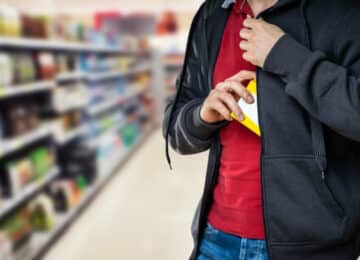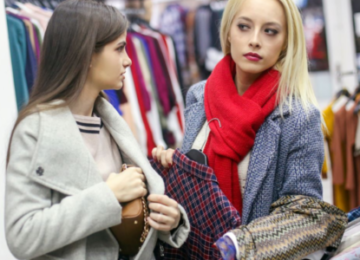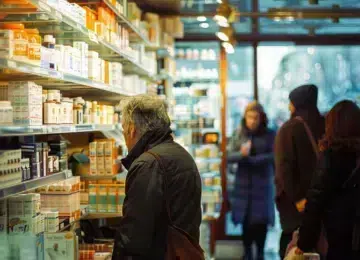How AI can help to prevent shoplifting in pharmacies?

Pharmacies aren't any less at risk than regular stores when it comes to shoplifting. This issue obliges pharmacists to equip their spaces with a security system and surveillance cameras. So, what do you do when you can't keep a constant eye on the monitoring screens? How can you know if someone is really shoplifting? AI can help pharmacists with these issues.
Shoplifting in pharmacies: A daily struggle
Countless pharmacies report shoplifting incidents every day. Amongst the most commonly stolen items in pharmacies, you'll find products for babies (nappies, infant milk formula), hygiene products and even cosmetic products.
Self-serve products therefore pose a real issue for pharmacists, who need to invest in a considerable security system: Security gates, anti-theft stickers, surveillance cameras, etc. This all comes at a cost and doesn't guarantee protection against shoplifting.
Of course, there are various strategies that can be implemented to work around the security system (bags and other anti-theft interference systems). This has a direct impact on inventory shrinkage and, consequently, on the pharmacy's turnover.
As for cameras, pharmacists and their colleagues can't always monitor them. Their attention is first and foremost focused on their customers. Moreover, it's not always an option to recruit security agents. Within this context, the use of AI is a good solution for helping pharmacy managers.
AI solution for preventing shoplifting in pharmacies
Thanks to AI, you can be alerted in the event of shoplifting in progress, without having to monitor a screen. How does it work?
Real-time detection of shoplifting in pharmacies
The pharmacy must be equipped with CCTV cameras. The Veesion software is installed on the video recorder supplied with the cameras. This means there is no need to invest in additional equipment. The software can be configured to operate both during the day and overnight.
To detect shoplifting gestures, the software uses an algorithm that analyses images in real time. As soon as a suspicious gesture is detected, the pharmacist receives a video alert on their smartphone, tablet or computer. They can then intercept the suspect, with the video as evidence, and ask them to return the stolen products.
In the event of a proven crime, the pharmacy manager can then call the police to arrest the suspect. They have the option of pressing charges with the police, either by reporting the incident to a police station or by addressing a letter to the relevant public prosecutor.
Recognition of gestures but not faces
The AI means that suspicious behaviour can be detected by analysing shoplifting gestures and not an individual's face. Therefore, no facial recognition is involved. This technology doesn't infringe the privacy of customers in the pharmacy.
The AI doesn't seek to establish the identity of individuals entering and exiting the pharmacy. It only analyses the gestures of individuals, and the pharmacist is only sent a notification in cases whereby these gestures appear to be suspicious. For example, these suspicious gestures may be a hand slipping items into pockets in clothing.
In short, artificial intelligence is a technology that can be used to effectively help pharmacists prevent shoplifting. It is installed directly on the security equipment already in use, and it analyses images in real time. It isn't the faces of the individuals that are analysed, but rather their gestures. In the event of suspicious behaviour being detected, an alert is sent to the pharmacy manager. They are then free to intervene and confront the suspected individual, backed by video evidence. The products can then be returned and the pharmacist can decide whether they want to involve the police.
The most popular
Related news
Discover what Veesion can do for you. Do you have one or more stores?
Our team will contact you within 48 hours





